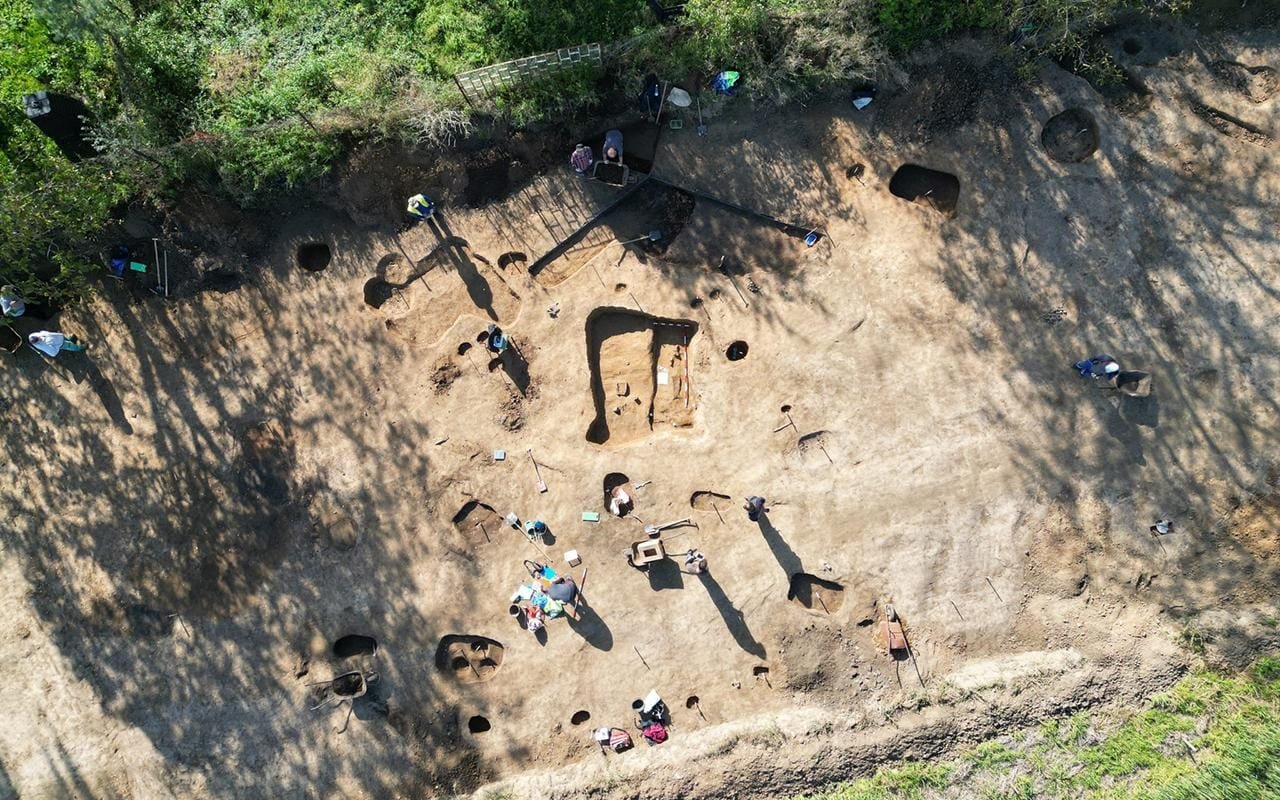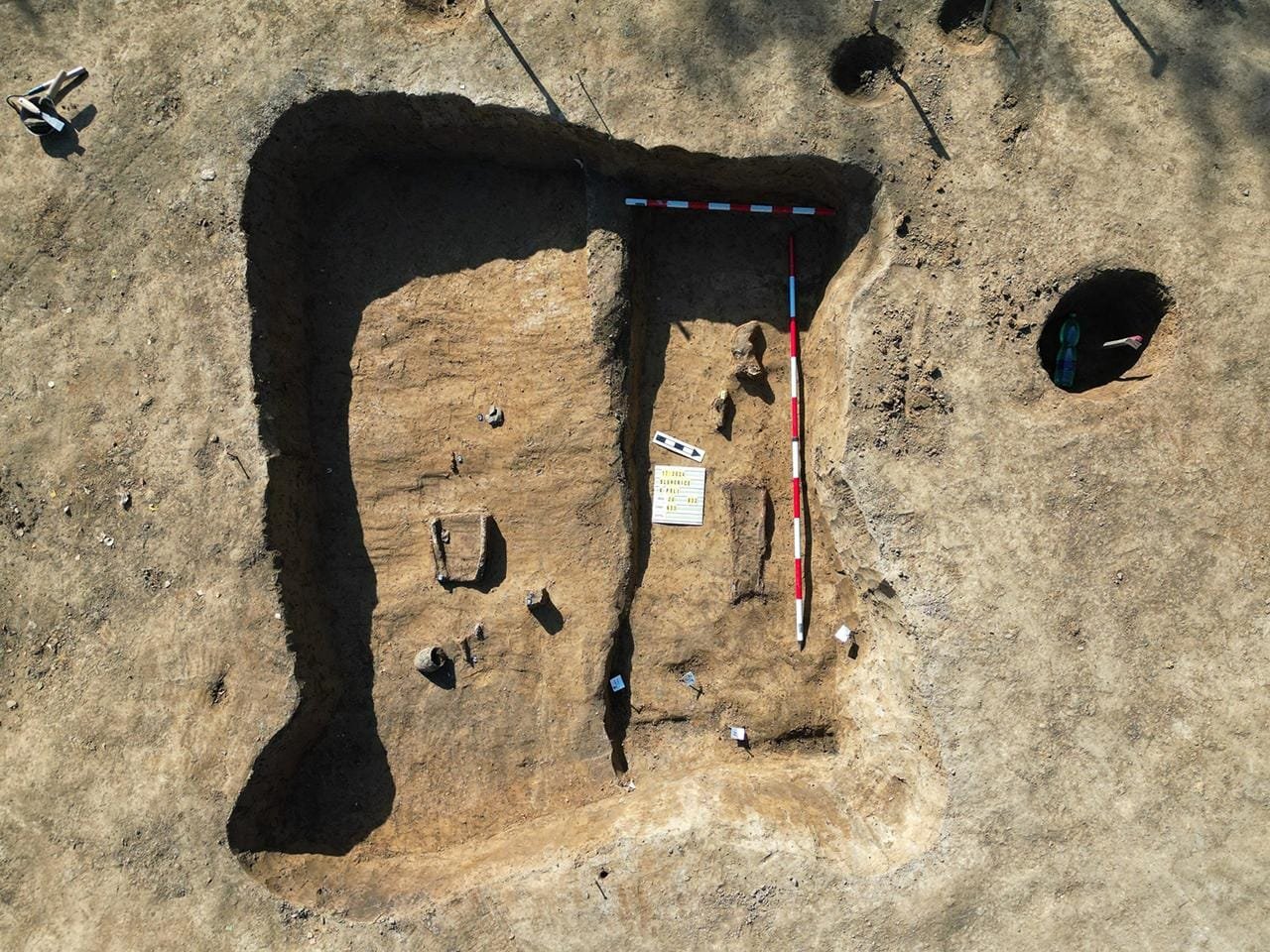Archaeologists from the Archaeological Center of Olomouc have unearthed a significant historical site in Dluhonice, near Přerov in Czechia. The excavation, carried out over a 250 × 15-meter area between mid-September and November, revealed traces of three major cultural periods: a Celtic cremation cemetery from the 3rd–2nd century BCE, Slavic graves from the 9th–10th century CE, and a Neolithic settlement dating back to approximately 5000 BCE.
 Archaeologists have unearthed a significant historical site in Dluhonice, near Přerov in Czechia. Credit: Olomouc Archaeological Centre
Archaeologists have unearthed a significant historical site in Dluhonice, near Přerov in Czechia. Credit: Olomouc Archaeological Centre
One of the most striking discoveries was a La Tène culture cremation cemetery containing 33 graves, the largest concentration of Celtic cremations found in central Moravia. Unlike most Celtic burial sites in the region, which typically contain skeletal remains, this necropolis showcases cremation—a practice less documented in this area. “This is an exceptional find because Celtic graves from other sites are typically skeletal and in smaller numbers,” said chief archaeologist Marek Kalábek.
The most prominent burial belonged to a warrior, identified as a member of the elite due to the grave goods found alongside him. These included an iron sword stored in a leather scabbard, a spear, and a belt. “The double-edged iron sword was used in combat or for defense. Other graves were simpler, containing items such as bronze fibulae, ceramic vessels, and iron tools. These modest burials offer rare insights into the lives of lower-class Celts. “Through these finds, we gain unique information about individuals whose existence was previously only sparsely evidenced,” Kalábek added.
The cremation process, performed at temperatures around 600°C, left only small bone fragments, presenting challenges for analysis. Anthropologist Lukáš Šín noted, “The shape of the fibula is characteristic of this period, and its craftsmanship helps us date the findings more precisely.”
 The excavation also uncovered graves from the Great Moravian Empire, dated to the 9th–10th century CE. Credit: Olomouc Archaeological Centre
The excavation also uncovered graves from the Great Moravian Empire, dated to the 9th–10th century CE. Credit: Olomouc Archaeological Centre
The excavation also uncovered graves from the Great Moravian Empire, dated to the 9th–10th century CE. These skeletal graves followed traditional Christian burial customs, with bodies oriented westward and legs extended. A standout discovery was a double grave and the burial of a woman placed on a wooden bier, a rare occurrence due to the usual decomposition of organic materials. Her grave goods included a ceramic vessel, a fire-starting kit, and an iron sickle with a wooden handle. “This is an exceptionally well-preserved artifact,” said Šín.
Other graves from this era were modest, containing items like small bronze earrings, iron knives, and flint fire-starting kits. These finds suggest the interred were farmers of humble means.
The earliest layer of the site dates to the Neolithic period and is ᴀssociated with the Linear Pottery culture. Over 300 structures, including longhouses, storage pits, and kilns, were identified. Archaeologists recovered artifacts such as ceramic shards, flint tools, polished stone axes, and grinding stones. Kalábek elaborated, “In addition to abundant pottery, we discovered flint tools and stone mills for grinding grain. These artifacts help us better understand the daily lives of prehistoric societies.”
The settlement’s storage pits, later repurposed as waste disposal sites, highlight the evolving use of the landscape over time.
After completing the fieldwork, all findings were transferred to the Archaeological Center of Olomouc for analysis and conservation. “In total, 51 graves and over 300 settlement structures were examined. We now face the task of analyzing and conserving the artifacts and compiling a detailed excavation report. The artifacts will be handed over to the Comenius Museum in Přerov,” Kalábek concluded.
More information: Olomouc Archaeological Centre





